An electron and a proton enter a magnetic field with equal velocities. The particle that experiences more force is
electron
proton
both experience same force
it cannot be predicted.
The correct Answer is:3
To solve the problem of determining which particle, an electron or a proton, experiences more force when entering a magnetic field with equal velocities, we can follow these steps:
1. Understand the Force on a Charged Particle in a Magnetic Field:
The force F experienced by a charged particle moving in a magnetic field is given by the formula:
F=Q⋅v⋅B⋅sin(θ)
where:
- F is the magnetic force,
- Q is the charge of the particle,
- v is the velocity of the particle,
- B is the magnetic field strength,
- θ is the angle between the velocity vector and the magnetic field vector.
2. Identify the Charges of the Particles:
- The charge of an electron (Qe) is approximately −1.6×10−19 C (negative charge).
- The charge of a proton (Qp) is approximately +1.6×10−19 C (positive charge).
3. Assume Equal Velocities and Magnetic Field:
According to the problem, both the electron and proton enter the magnetic field with equal velocities v and are subjected to the same magnetic field strength B.
4. Assume the Angle:
For maximum force, we can assume that the angle θ is 90∘, which means sin(90∘)=1. Thus, the formula simplifies to:
F=Q⋅v⋅B
5. Calculate the Forces:
- For the electron:
Fe=Qe⋅v⋅B=(−1.6×10−19)⋅v⋅B
- For the proton:
Fp=Qp⋅v⋅B=(1.6×10−19)⋅v⋅B
6. Compare the Magnitudes of Forces:
The magnitudes of the forces are:
- |Fe|=1.6×10−19⋅v⋅B
- |Fp|=1.6×10−19⋅v⋅B
Since both forces have the same magnitude but opposite directions (due to the opposite charges), the absolute values of the forces are equal.
7. Conclusion:
Both the electron and the proton experience the same magnitude of force when entering the magnetic field with equal velocities.
Final Answer:
Both the electron and the proton experience the same force.
The force F experienced by a charged particle moving in a magnetic field is given by the formula:
F=Q⋅v⋅B⋅sin(θ)
where:
- F is the magnetic force,
- Q is the charge of the particle,
- v is the velocity of the particle,
- B is the magnetic field strength,
- θ is the angle between the velocity vector and the magnetic field vector.
- The charge of an electron (Qe) is approximately −1.6×10−19 C (negative charge).
- The charge of a proton (Qp) is approximately +1.6×10−19 C (positive charge).
According to the problem, both the electron and proton enter the magnetic field with equal velocities v and are subjected to the same magnetic field strength B.
For maximum force, we can assume that the angle θ is 90∘, which means sin(90∘)=1. Thus, the formula simplifies to:
F=Q⋅v⋅B
- For the electron:
Fe=Qe⋅v⋅B=(−1.6×10−19)⋅v⋅B
- For the proton:
Fp=Qp⋅v⋅B=(1.6×10−19)⋅v⋅B
The magnitudes of the forces are:
- |Fe|=1.6×10−19⋅v⋅B
- |Fp|=1.6×10−19⋅v⋅B
Both the electron and the proton experience the same magnitude of force when entering the magnetic field with equal velocities.
Both the electron and the proton experience the same force.
Topper's Solved these Questions
- MOVING CHARGES AND MAGNETISMBook:NARAYNAChapter:MOVING CHARGES AND MAGNETISMExercise:LEVEL-I(C.W)
Explore 58 Videos
- MOVING CHARGES AND MAGNETISMBook:NARAYNAChapter:MOVING CHARGES AND MAGNETISMExercise:Level-II(C.W)
Explore 63 Videos
- MOVING CHARGES AND MAGNETISMBook:NARAYNAChapter:MOVING CHARGES AND MAGNETISMExercise:EXERCISE - 4
Explore 20 Videos
- MAGNETISM AND MATTERBook:NARAYNAChapter:MAGNETISM AND MATTERExercise:EXERCISE - 4 (SINGLE ANSWER TYPE QUESTION)
Explore 17 Videos
- NUCLEAR PHYSICSBook:NARAYNAChapter:NUCLEAR PHYSICSExercise:LEVEL-II-(H.W)
Explore 9 Videos
Similar Questions
A neutron, a proton, an electron and an a-particle enters a uniform magnetic field with equal velocities. The field is directed along the inward normal to the plane of the paper. Which of these tracks followed are by a - particle.
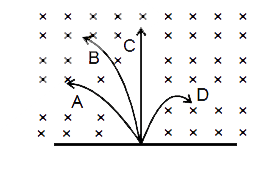
View SolutionA neutron, a proton , and an electron and an alpha particle enter a region of constant magnetic field with equal velocities . The magnetic field is along the inward normal to the plane of the paper . The tracks of the particles are labelled in fig. the electron follows track .... and the alpha particle follows track.....
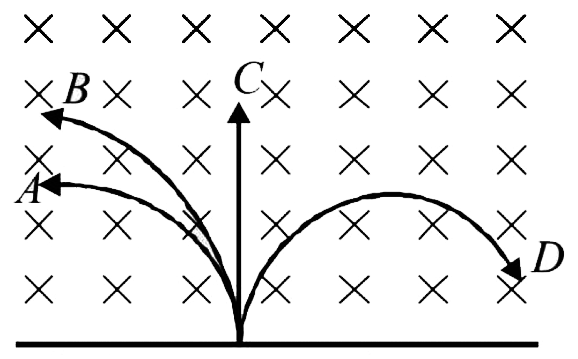
View Solution
Knowledge Check
Assertion : An electron and proton enters a magnetic field with equal velocities, then, the force experienced by the proton will be more than electron.
Reason : The mass of proton is 1837 times more than electron.AIf both assertion and reason are true and the reason is the correct explanation of the assertion.BIf both assertion and reason are true but reason is not the correct explanation of the assertion.CIf assertion is true but reason is false.DIf assertion is false but reason is true.Assertion: An electron and proton enters a magnetic field with equal velocities, then, the force experienced by the proton will be more than electron.
The mass of proton is 1837 times more than electron.AIf both the assertion and reason are true and reason is a true explantion of the assertion.BIf both the assertion and reason are true but the reason is not true the correct explantion of the assertion.CIf the assertion is true but reason falseDIf both the assertion and reason are false.An electron and a proton enter a magnetic field at right angles to the field with the same kinetic energy
AThe trajectory of the electron will be less curvedBThe trajectory of the proton will be less curvedCBoth the trajectory electron will be equally curvedDBoth will move along straight line paths
A neutron, a proton, an electron and an alpha particle enter a region of constant magnetic field with equal velocities. The magnetic field is along the inward normal to the plane of the paper. The tracks of the particles are lebelled in Fig. The electron follow track......... and the alpha particle follow track..........
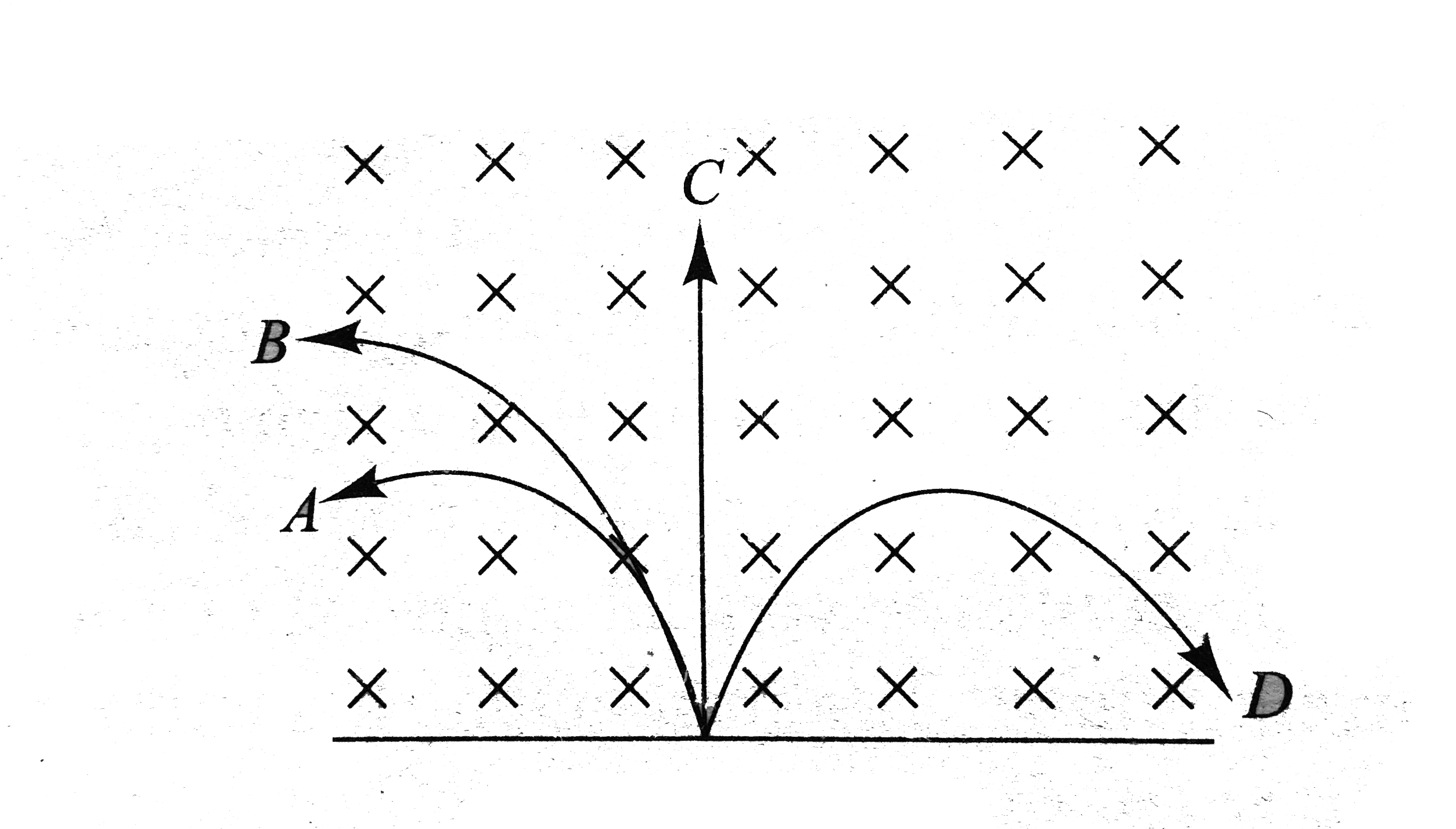
View SolutionStatement-1: If an electron and proton enter a perpendicular magnetic field with equal momentum, then path of electron is more curved than that of proton.
Statement-2: Electron is lighter particle.
View SolutionA neutron, a proton, an electron and an α−particle enter a region of uniform magnetic field with equal velocities. The magnetic field is perpendicular to the paper and directed into it. The tracks of particles are labeled in Fig. 1.132. The neutron follows the track
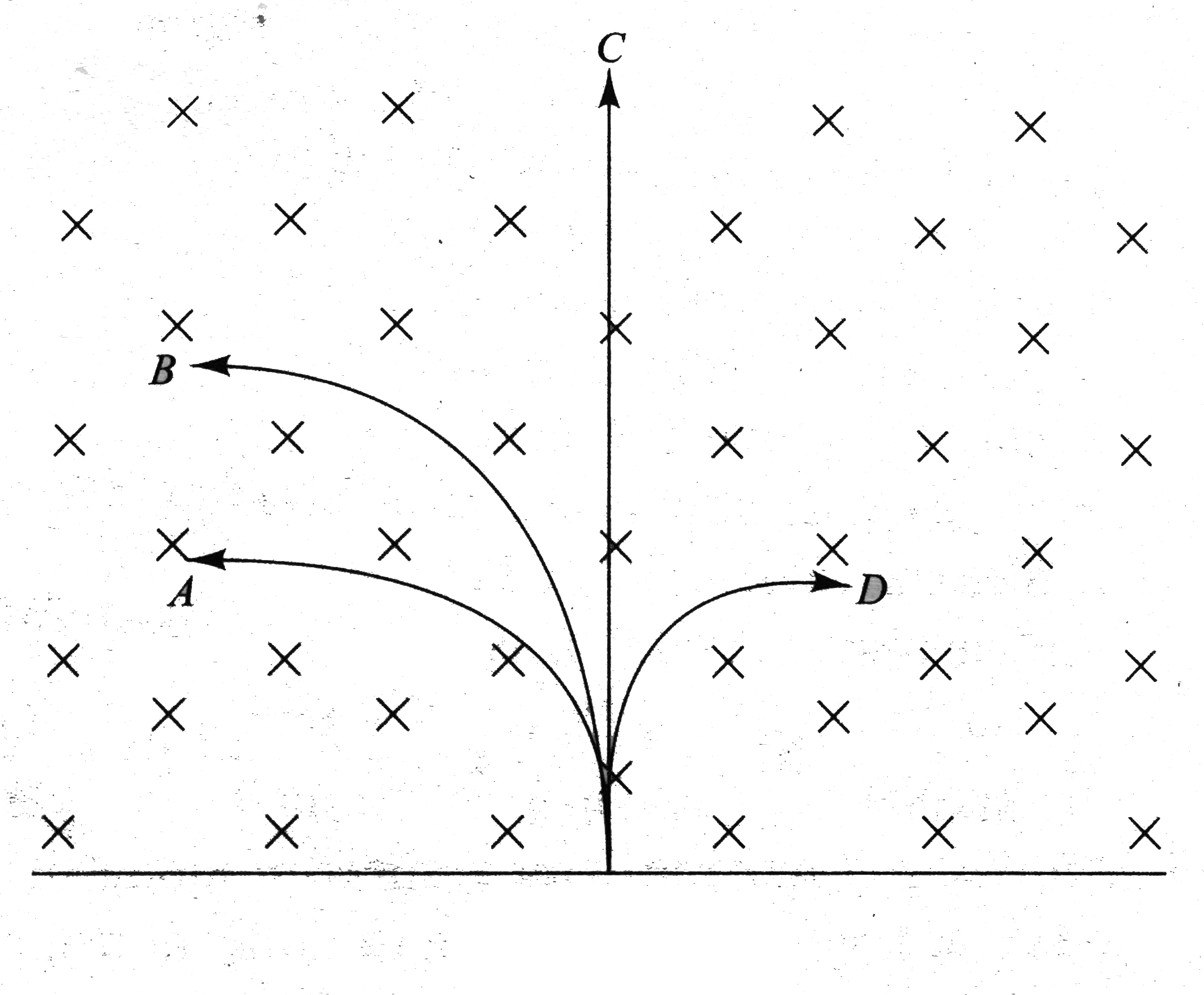
View SolutionA neutron, a proton , an electron and an alpha particle enter a region of constant magnetic field with equal velocities. The magnetic field is along the inward normal to the plane of the paper. The tracks of the particles are labled in the figure. The electron follows ______track and alpha particle follows track________.
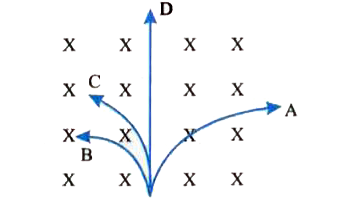 .
.
View SolutionAssertion (A): An electron and a proton moving with same velocity enters a magnetic field. The force experienced by the proton is more than the force experienced by the electron.
Reason (R): The mass of proton is more than the mass of the electron.
View Solution

